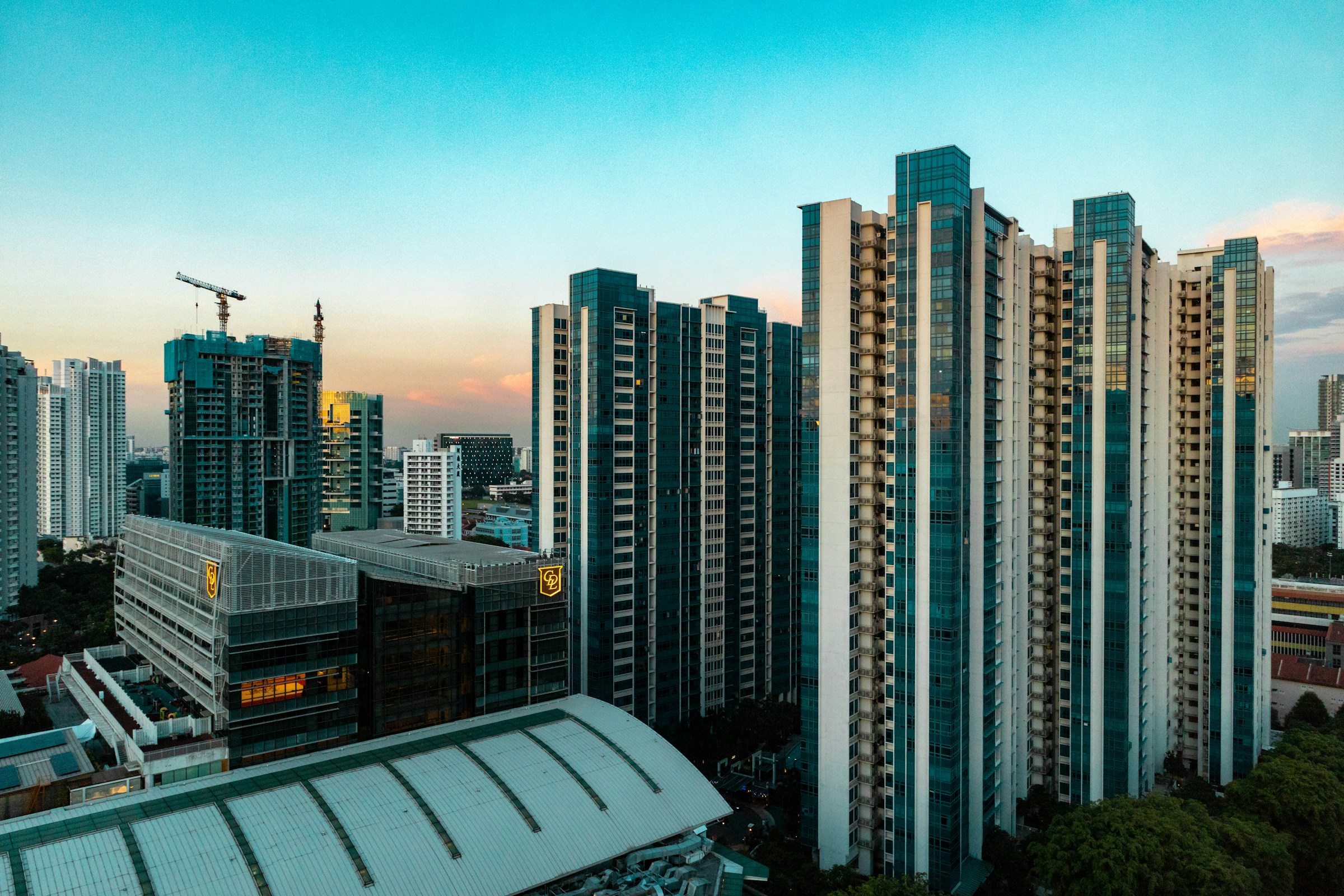In the wake of recent tragedies, you have likely become acutely aware of the importance of fire safety in high-rise buildings. Whether you are a property owner, tenant, builder, or simply a concerned citizen, understanding the best practices for fire safety compliance in UK high-rise buildings is crucial. These practices and regulations are designed to ensure the safety of all residents and minimize the risk of fires. In this article, we will explore the key aspects of fire safety compliance in high-rise buildings, including who is responsible for enforcing these regulations, what the requirements are, and the guidance available to ensure compliance.
Understanding the Risk
High-rise buildings inherently pose a unique set of challenges when it comes to fire safety. The risk they present isn’t merely hypothetical – it’s real, and the potential consequences are dire. That’s why it’s crucial to understand the specifics of high-rise fire safety and what you can do to ensure compliance.
A lire également : How can UK property developers create more inclusive housing solutions?
Fire can spread rapidly in high-rise buildings, and the height of these constructions can make firefighting efforts more difficult. Specific risks associated with high-rise buildings include vertical fire spread, the possibility of residents being cut off from escape routes, and the potential for structural collapse. Consequently, fire safety regulations for high-rise buildings are stringent and must be followed to the letter to ensure the safety of occupants.
Fire Safety Regulations in High-Rise Buildings
There are strict fire safety regulations in place for high-rise buildings in the UK. These are intended to ensure that these structures are as safe as possible and that, in the event of a fire, it can be controlled and extinguished quickly, minimising harm to residents and the building itself.
A lire également : What detailed steps should be taken when considering the purchase of a UK waterfront hotel?
The Regulatory Reform (Fire Safety) Order 2005 is the primary legislation governing fire safety in non-domestic premises, including residential blocks of flats and high-rise buildings. This legislation requires that a responsible person, often the landlord or property manager, carry out a fire risk assessment and implement suitable and sufficient measures to manage any identified risks.
It also includes requirements for fire detection and warning systems, escape routes, fire doors, and the management of fire safety, among other things. This legislation is enforced by local fire and rescue services, who have the power to inspect properties and ensure compliance.
Maintaining Fire Safety Compliance
Maintaining fire safety compliance is a critical ongoing task for those responsible for high-rise buildings. Regular fire risk assessments are a key part of this, with guidance suggesting that these should be conducted at least annually, or more frequently if there are significant changes to the building or its use.
The fire risk assessment should identify potential fire hazards, determine who is at risk, evaluate and prioritise these risks, record findings and develop an action plan, and regularly review the assessment. It’s also essential to ensure that proper fire safety measures are in place, including fire detection and warning systems, appropriate fire doors, and clear escape routes.
Ensure regular maintenance and testing of fire safety measures, and keep all records of these tests. Tenants should also be kept informed about fire safety measures, including what they should do in the event of a fire.
Who is Responsible for Fire Safety Compliance?
Under UK fire safety legislation, the responsible person for a high-rise residential building is usually the landlord, building owner, or property manager. This person has a legal responsibility to ensure that the building complies with fire safety regulations.
The responsible person is required to carry out a fire risk assessment, implement appropriate fire safety measures, and maintain these measures in a satisfactory condition. They must also provide information to tenants about the risks identified in the fire risk assessment and the measures taken to address these risks.
If the responsible person fails to meet their obligations, they can be held legally accountable and face enforcement action from the local fire and rescue service. This can include hefty fines and even prison sentences, so it’s vital that the responsible person takes their obligations seriously.
The Role of Construction in Fire Safety Compliance
While the responsible person plays a key role in maintaining fire safety compliance, the construction of the building itself also plays a significant part. The materials used, the way the building is designed, and the methods by which it is constructed all contribute to its overall fire safety.
For example, the use of non-combustible materials can help to limit the spread of fire, while appropriate compartmentation can prevent fire and smoke from spreading to other parts of the building. Good construction practices can also ensure that escape routes remain accessible and effective in the event of a fire.
In conclusion, whether you are responsible for managing a high-rise building, a tenant, or a construction professional, understanding and complying with fire safety regulations is of utmost importance. Lives depend on it.
The Essential Role of Fire Safety Equipment
Fire safety equipment is an indispensable aspect of fire safety in high-rise residential buildings. The right equipment can save lives, prevent injuries, and minimise property damage in the event of a fire. These tools are not just beneficial, but are mandated by UK fire safety regulations.
The Regulatory Reform (Fire Safety) Order 2005 requires that all high-rise buildings be equipped with a well-functioning fire detection and warning system. This includes fire alarms that can be easily heard throughout the entire building. The alarms should be regularly tested to ensure they are operational, and the results of these tests should be recorded.
Fire doors are another crucial piece of fire safety equipment. They are designed to prevent the spread of fire and smoke, allowing occupants more time to exit the building. These doors must be properly installed, maintained and kept clear of any obstructions at all times.
Furthermore, there must be clear and easily accessible escape routes throughout the building. These routes should be kept free of obstacles, and clearly marked with signs.
Fire extinguishers must also be available and easy to find. They should be inspected regularly to ensure they are in working order. The type of extinguisher provided should be suitable for the potential risks in the building. For example, a kitchen area may require a different type of extinguisher compared to an office area.
The Consequences of Non-Compliance
Non-compliance with fire safety regulations can have dire consequences. Not only does it put the lives of occupants at risk, but it can also result in significant legal penalties for the accountable person.
The Regulatory Reform (Fire Safety) Order 2005 gives fire and rescue services the power to take action against property owners and managers who fail to comply with fire safety regulations. This can include enforcement notices, prohibiting the use of the property, and even prosecution.
If found guilty, the responsible person may be subject to unlimited fines and up to two years in prison. This highlights the gravity of the situation and stresses the importance of diligent fire safety compliance.
In addition to these legal implications, non-compliance can also have financial consequences. Insurance companies may not cover damage caused by a fire if it is found that the building was not in compliance with fire safety regulations.
In Conclusion: Everyone Plays a Role in Fire Safety
Fire safety in high-rise buildings is not a matter to be taken lightly. It is a multi-faceted issue that requires ongoing attention from the responsible persons, such as landlords, building owners, and property managers. Regular risk assessments and the upkeep of fire safety measures are crucial to minimise the risk of fire and ensure the safety of all building occupants.
However, it goes beyond the responsible person. Construction professionals, building designers, fire safety equipment suppliers, tenants – everyone has a role to play. From the use of non-combustible materials in construction to the correct use of fire doors and escape routes by residents, everyone’s actions contribute to the overall fire safety of the building.
The consequences of non-compliance are severe, including legal penalties and potential loss of life. As such, it behoves all parties to take their responsibilities seriously.
By understanding and adhering to the best practices for fire safety compliance, we can all help to ensure that UK high-rise buildings are as safe as possible. Lives quite literally depend on it.











